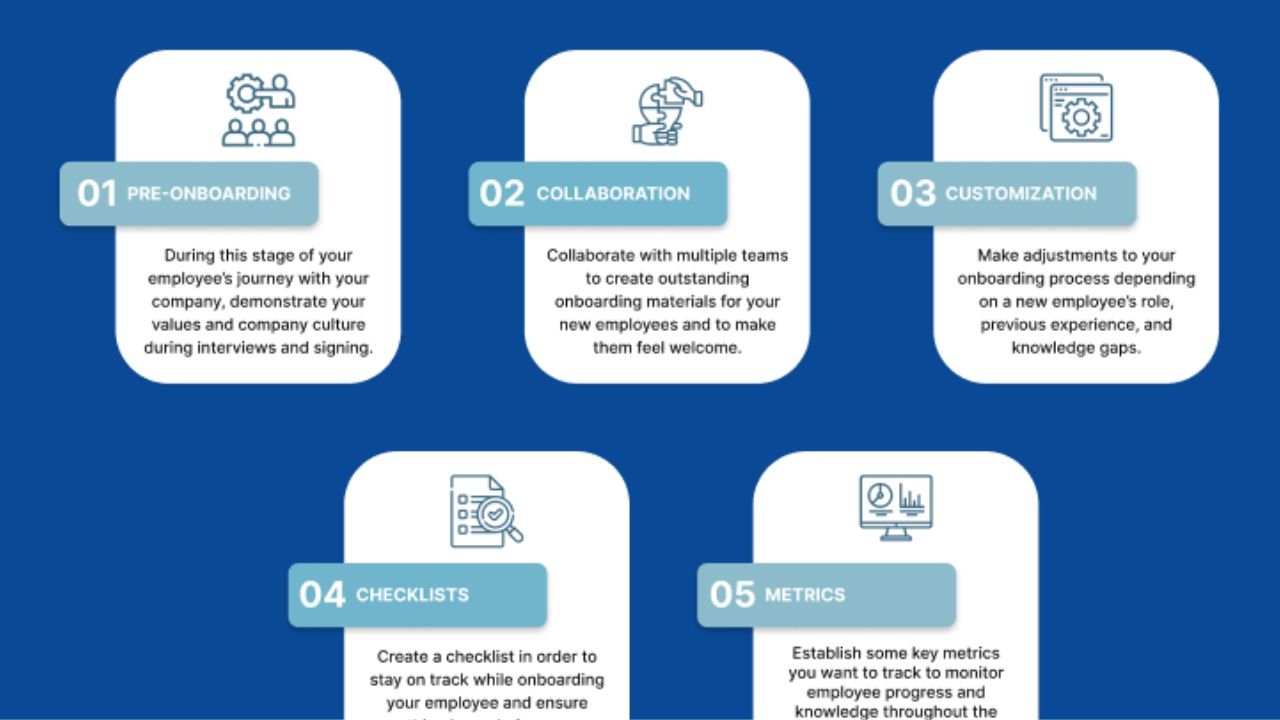You could argue that the onboarding phase starts your recruits’ active periods in the organization on the right note. Good onboarding goes beyond paperwork and showing them the way; it creates the base for lasting success, greater involvement and retaining employees.
There is no denying that onboarding these days has to be more engaging than ever before. Proper onboarding processes give recruits helpful resources and help them contribute positively to the goals of the organization.
A lot of organizations have struggled with this aspect in real life. There are five simple steps to craft an entertaining and effective plan for helping new employees succeed.
1. Be Ready ahead of Day One
It helps to begin onboarding well before the person’s first day. This is where pre-boarding takes place: a perfect way to set a great opening for your new hires and make them eager to join your team.
Consider giving employees a welcome box with custom pens as gifts, a personal note from their boss and all the documents they will need for their new job.
Inviting them to take part in an online meeting where they can meet each other and answer their questions while getting to know their new colleagues is also helpful. As a result, when employees have a positive onboarding experience, it becomes easy and engaging for them and supports their long-term achievement.
2. Offer Customization
An effective onboarding program is not the same for all organisations. Because new hires have their own needs and strengths, the company’s approach should take these into account for every individual.
To start, learn about what the role requires, their responsibilities and the work history they have. As a result, you will be able to identify the knowledge areas or concerns that learners might have.
After that, plan an onboarding process that brings a personal touch to people’s support, helping them achieve their goals. A salesperson who has worked in the same industry before starting at the company will generally know more about the company’s products and services and the steps involved in making a sale.
If you want to bring on a new college software developer, think about giving hands-on training and mentorship. Find out about the new worker’s way of learning and what they appreciate in their training.
No matter what style you use, individuals will respond differently; one group wants structure, while another wants it all to be more casual and group-based. Make everybody’s introduction to the company unique, so they know you value their individual contributions and want them to excel in the long run.
3. Be Sure to Have Clear Goals in Mind
The first part of the onboarding process should clearly discuss the new hires’ role and the set goals they are expected to meet. Because of this, the staff member will have clear instructions for their work and what their employer expects in return.
Decide on some important things this new colleague would be working to achieve during their first 30, 60 and 90 days. The list could include, but is not limited to such items:
- Attend and finish all the necessary training and certification courses.
- Studying what the company sells, provides and how their work is done
- Forge connections with the most important contacts and fellow team members
- Showing expertise in their jobs
- Setting personal aims in line with what the organization aims to achieve
Make sure you explain the workplace hours, the communication process and feedback/review methods your employees should follow. Ensure the company policies and work practices are properly outlined for the employees to follow.
Because of this clarity, the new employee is confident they will live up to your standards and assist the team in achieving success.
4. Make a Daily Schedule
Onboarding should give new team members an overview of how every task fits into the company’s goals. If there is no guidance, an anxious and disorganized experience becomes even more difficult and this might lower a new employee’s confidence.
Prepare a plan for the employee’s first few weeks which should cover classroom training, meetings with the team, casual get-togethers and tasks that involve the company’s work tools.
Spend some time to finish all necessary papers, position each at their workstations and introduce them to the building. Find the right timing for onboarding, as it will likely lead to more productive involvement on certain days/times of the day.
Arrange tough training sessions in the early part of the week and save the end for any social events or gatherings.

5. Allow Students to Take Part in Activities and Enjoy Themselves.
Onboarding programs can be made even clearer, aiming to make sure new members of the team feel they are involved and eager for their job.
A way this can be achieved is by using different ways to learn, for example:
- Interactive presentation/workshop
- Experiences using simulation tools
- Students can benefit from learning from and working with one another as well as being guided by experienced staff.
- The virtual or augmented reality world
- Using quizzes or organizing scavenger hunts
Therefore, you can make sure both types of learners are engaged and encouraged as you introduce them to the company.

Final Thoughts
An appealing and informative onboarding process is very important for new employees by welcoming them, giving them the skills to succeed and making them feel enthusiastic about helping the organization grow.
If you take the five steps shown in this guide, you’ll be one step closer to ensuring your new team members achieve success in your company.

